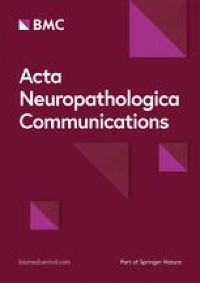Abstract
The cellular alterations of the hippocampus lead to memory decline, a shared symptom between Alzheimer's disease (AD) and dementia with Lewy Bodies (DLB) patients. However, the subregional deterioration pattern of the hippocampus differs between AD and DLB with the CA1 subfield being more severely affected in AD. The activation of microglia, the brain immune cells, could play a role in its selective volume loss. How subregional microglia populations vary within AD or DLB and across these conditions remains poorly understood. Furthermore, how the nature of the hippocampal local pathological imprint is associated with microglia responses needs to be elucidated. To this purpose, we employed an automated pipeline for analysis of 3D confocal microscopy images to assess CA1, CA3 and DG/CA4 subfields microglia responses in post-mortem hippocampal samples from late-onset AD (n = 10), DLB (n = 8) and age-matched control (CTL) (n =� ��11) individuals. In parallel, we performed volumetric analyses of hyperphosphorylated tau (pTau), amyloid-β (Aβ) and phosphorylated α-synuclein (pSyn) loads. For each of the 32,447 extracted microglia, 16 morphological features were measured to classify them into seven distinct morphological clusters. Our results show similar alterations of microglial morphological features and clusters in AD and DLB, but with more prominent changes in AD. We identified two distinct microglia clusters enriched in disease conditions and particularly increased in CA1 and DG/CA4 of AD and CA3 of DLB. Our study confirms frequent concomitance of pTau, Aβ and pSyn loads across AD and DLB but reveals a specific subregional pattern for each type of pathology, along with a generally increased severity in AD. Furthermore, pTau and pSyn loads were highly correlated across subregions and conditions. We uncovered tight associations between microglial changes and the subfield pathological imprint. Our findi ngs suggest that combinations and severity of subregional pTau, Aβ and pSyn pathologies transform local microglia phenotypic composition in the hippocampus. The high burdens of pTau and pSyn associated with increased microglial alterations could be a factor in CA1 vulnerability in AD.



Δεν υπάρχουν σχόλια:
Δημοσίευση σχολίου